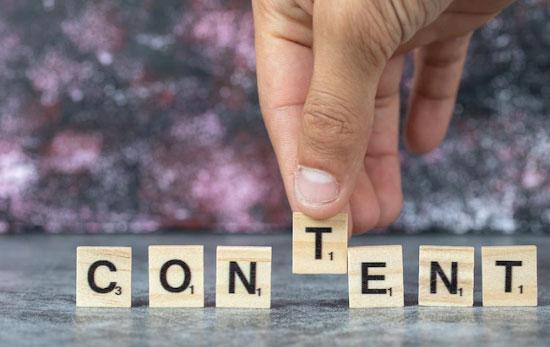Ever since email marketing has become more of a necessity, people have been trying to find ways to optimize their campaigns. While there are many different ways of doing this, one common question that arises is how automation can be improved with respect to personalization and segmentation.
Discover 7 Tips to Improve #Email #Automation #Workflows
Luckily, there are several ways in which you can do this by optimizing your workflows. In this article we will explore these tips and explain why they are important for maximizing the effectiveness of email marketing campaigns:
- Review Your Existing Workflow
- Create an Automation Calendar
- Use Dynamic Personalization on Your Emails
Automate Everything
You can’t automate everything (yet), but you should be able to automate email marketing. Make it so that every time a customer signs up for your newsletter, they get 2-4 emails every week. Don’t overdo it with the frequency or send too many emails at once; instead, spread them out evenly throughout the week so that customers won’t be overwhelmed by your messaging.

Automate your workflow so that whenever someone follows up with you via email, they get an automated response explaining how much longer it will take until they receive an answer back from you.
You can even set up multiple stages in this process and have each stage send a different type of message based on how long after initial contact they were received by the recipient (i.e., “You’re in Stage 1 – We’ll respond within 24 hours” versus “You’re in Stage 4 – We’ll respond within 5 days”).
Automate marketing campaigns by using drip campaigns and autoresponders as well as personalization tools like Dynamic Content Insertion (DCI). This will allow sales teams to spend less time managing their outreach efforts while simultaneously increasing their conversion rates since personalized sales messages are always more effective than generic ones
Be Clear About Your Intentions
The first step to improving your automated workflow is to make sure you are clear about your intentions. Email automation can be used in a variety of ways, but it’s important that you’re clear about the purpose of each email you send.
For example, if you’re sending out a welcome email once someone signs up for an account on your website and then again after they’ve completed a purchase, then it’s helpful if those emails are clearly marked as coming from (your company) and include information relevant to the user.

Because people don’t always read past the subject line or first sentence of an email (and often don’t even read that far), it’s important to be extremely specific when naming and labeling each automated message so subscribers know what they’re getting into before opening an email.
If someone sees “The New You” in their inbox and assumes it’s spam because no one has ever sent them anything like that before, there’s going to be confusion—or worse yet—they may choose not to open any future communications from your company and miss out on valuable updates related specifically targeted towards their needs as customers!
Make it easy to unsubscribe
While you’re creating your automation, make it easy for your subscribers to unsubscribe from the emails they don’t want. If a subscriber is still receiving notifications they don’t want, chances are they won’t engage with your content and won’t be in your audience anymore.
By following these tips and creating high-quality, relevant content, you can ensure that your subscribers receive the content they want and need. This will help them engage with your emails more frequently and make sure they don’t unsubscribe because of a lack of interest.
Only Send People Content That’s Relevant to Them
When it comes to your email automation workflow, you want to make sure that the people receiving your emails are getting content that’s relevant.
The first thing you need to do is understand how data can be used to target your audience.

You should also know what types of content they might be interested in and how their interests align with yours (or don’t). That way, you can create an effective segmentation strategy.
Once you’ve done that, it’s time to create your first campaign. You can do this by creating a list of segments and sending each one an email with content that will be relevant to them.
Use Dynamic Content to Make It Personalized
We all like to feel like we’re getting personalized service. Email automation is no different. Using dynamic content in your email workflow can help you personalize emails and make them more relevant, engaging and valuable to recipients.
When you have an automated email workflow, it’s important that the content in each message changes based on who receives it. Dynamic content makes it possible for you to change certain parts of the message (like greeting or product recommendations) based on factors like who sent the email or when they signed up for a product or service. This means that everyone gets a unique experience every time they interact with your brand!
Optimize Throughout the Customer Lifecycle
At this point, you’re probably familiar with the phrase “data-driven marketing.” This means that rather than making decisions based on intuition or guesswork, you use data to optimize your marketing efforts and make them more effective.
Email automation can help automate your most important initiatives—which means that it’s an opportunity for you to effectively measure and optimize throughout the customer lifecycle.

To do so, keep in mind these three key steps:
- Identify what needs improvement or optimization (your email campaign).
- Measure how well each part of this campaign is working (what emails get opened and clicked).
- Adjust as needed based on those insights (use automation software like BayEngage or other Klaviyo alternatives to make changes to future emails as needed).
Monitor and Improve Performance Regularly
Finally, you should monitor and improve performance regularly. This is especially true for email marketing automation. As you move through the list of tactics above, keep an eye on your results. You can use analytics to see where people are dropping off or unsubscribing from your email sequences, and then make adjustments based on those insights.
For example, if you notice that subscribers are exiting after viewing only a few messages in each sequence but staying engaged with the rest of their subscriptions (e.g., creating product reviews), then it may be worth skipping to the next message in a sequence sooner rather than later to encourage them to continue reading as much content as possible before they’re finished with their subscription period or decide not to renew it at all.

Key Takeaways when thinking about your email marketing automation
- Automate as much as possible. This is the golden rule of email marketing automation, and it happens to be the best way to engage and delight your customers.
- Be clear about your intentions. In order to do this, you should work backward from the end goal of your campaign—what do you ultimately want customers to do? Then, figure out what steps they need to take (and how many steps) in order for them to get there. By keeping these two things straight at all times, emails will be more effective and personalized over time because they’ll always be focused on moving people through a funnel or process toward their main goal.
- Make unsubscribing easy—and let them know when they’ve done so! People should never feel overwhelmed by an email list; instead, make sure that when someone does hit “Unsubscribe” in their inbox that it’s not only simple but also instantly recognizable as having been clicked on (think: “Thank You”).
- Use dynamic content whenever possible so that emails can become even more tailored towards individual preferences over time based on previous interactions between both parties involved (e-commerce stores in platforms like WooCommerce might even use this type of technology within their websites since WooCommerce abandoned cart emails need dynamic content the most).
If nothing else though one thing is true: if these four steps aren’t taken seriously then anything else won’t matter because nothing else will work well enough
Conclusion
We don’t have to tell you that email marketing automation is a growing field. As more and more businesses are using it to improve their marketing efforts, it’s important to keep up with the trends and know what your customers expect from you. By following these seven tips, not only will you be able to build better workflows but your customers will also appreciate the personalized touch that comes from having everything automated!
However, if you don’t have the time for running email marketing campaigns, you can always go for an email marketing agency to help you with emails from scratch!

